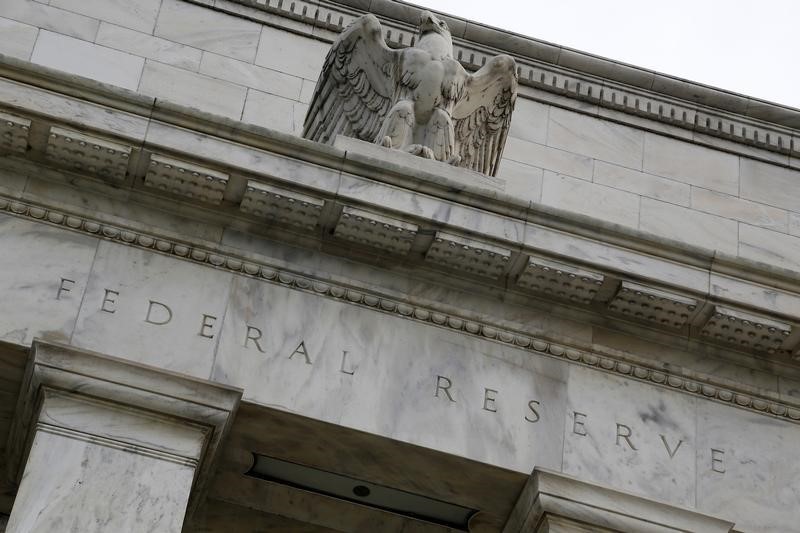Street Calls of the Week
(Bloomberg) -- Federal Reserve officials signaled they’re adopting a more flexible approach in their gradual interest-rate increases after a likely December hike, as they try to sustain a U.S. expansion that may become the longest on record next year.
“Almost all participants expressed the view that another increase in the target range for the federal funds rate was likely to be warranted fairly soon,’’ assuming the economy performs in line or stronger than their expectations, the central bank said in the minutes of its Nov. 7-8 session released in Washington Thursday.
Officials also said that their post-meeting statement may need to be modified at coming meetings, “particularly the language referring to the committee’s expectations for ‘further gradual increases,”’ the minutes said.
The minutes reinforce comments by Chairman Jerome Powell on Wednesday that suggested central bankers are getting close to an estimated range of interest rates that neither speed up nor slow down growth and are now adopting a flexible approach to their policy path. Those remarks sparked a rally in stock and bond markets, while sending the dollar lower.
Equities erased earlier declines after the minutes of the Federal Open Market Committee gathering were released, while the yield on the 10-year Treasury note was around 3.03 percent, holding its decline from earlier. The S&P 500 Index advanced for a fourth straight day, trading 0.4 percent higher at 3:04 p.m. New York time.
At the meeting this month, U.S. central bankers left the benchmark lending rate in a range of 2 percent to 2.25 percent. Fed officials next meet Dec. 18-19, and futures traders are pricing in a more than 70 percent probability of another quarter-point increase in the range for the key short-term rate, which would be the fourth hike of 2018.
A December increase would bring the policy rate close to the bottom of the 2.5 percent to 3.5 percent range policy makers estimated as neutral. At the same time, Fed officials are emphasizing they are becoming increasingly reliant on indicators and data to tell them that they are getting close to neutral.
“Many participants indicated that it might be appropriate at some upcoming meetings to begin to transition to statement language that placed greater emphasis on the evaluation of incoming data in assessing the economic and policy outlook,” the minutes said. “Such a change would help to convey the committee’s flexible approach.”
While Fed officials expected solid growth to continue before slowing to a pace closer to its trend over the medium term, they still saw some risks. The buildup of corporate debt amid weakening lending standards caught the attention of the committee.
“Several participants were concerned that the high level of debt in the nonfinancial business sector, and especially the high level of leveraged loans, made the economy more vulnerable to a sharp pullback in credit availability,” the minutes said.
Fed Strategy
The minutes also contained a lengthy discussion of the Fed’s operating strategy and how that links to banks’ preference to hold abundant excess reserves after the financial crisis.
Following a staff presentation which included a survey of senior financial officers, Fed officials appeared to side in favor of an operating regime that would provide abundant reserves to banks through a large Fed balance sheet, meaning that the central bank’s portfolio is unlikely to return to its pre-crisis stance.
“Based on experience over recent years, such a regime was seen as providing good control of short-term money market rates in a variety of market conditions,” the minutes said. “By contrast, interest rate control might be difficult to achieve in an operating regime of limited excess reserves.”
The minutes flagged the possibility that the Fed will make another adjustment to maintain control of the policy rate, by adjusting the separate interest rate on excess reserves, or IOER, which is currently set at 5 basis points below the upper bound of the federal funds target range.
Powell was cited in the minutes as saying that “it might be appropriate to implement another technical adjustment in the IOER rate relative to the top of the target range for the federal funds rate fairly soon.” Fed officials agreed that it would be “appropriate” to take action before the December meeting if necessary to keep the federal funds rate “well within” the Fed’s target range, according to the minutes.
(Recasts first paragraph, adds markets in fifth.)
